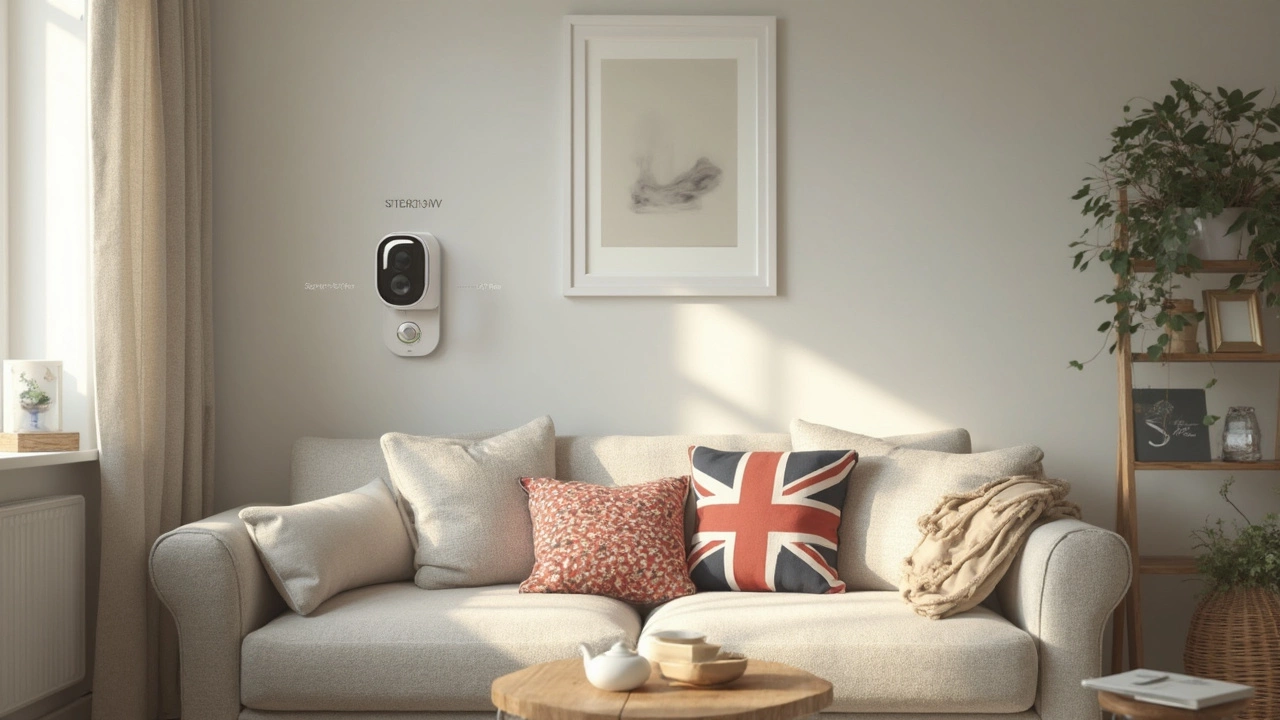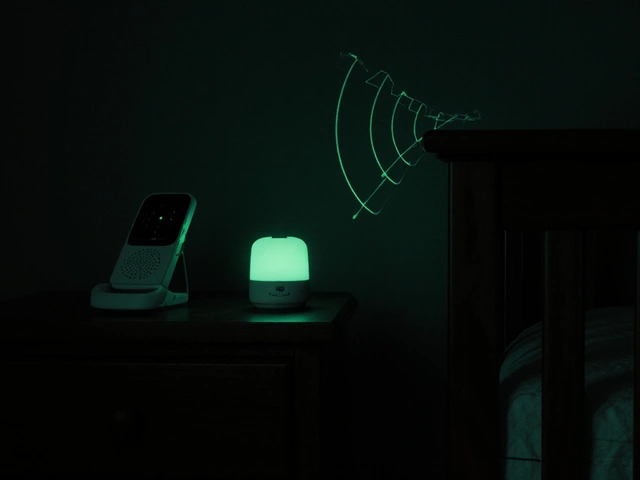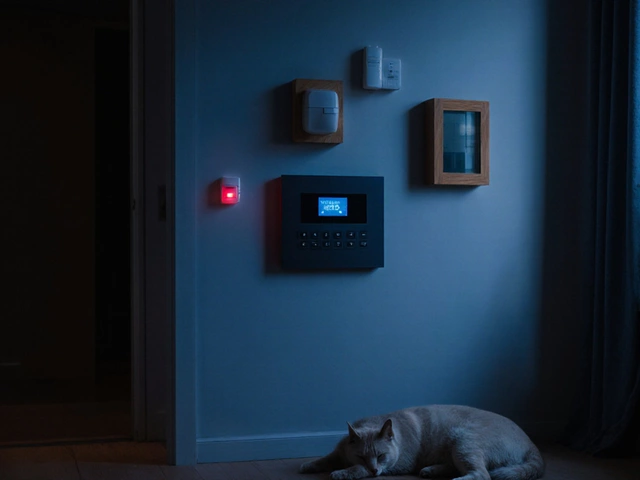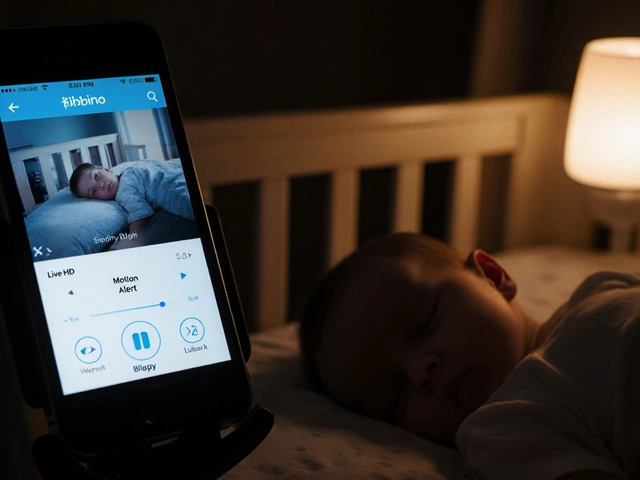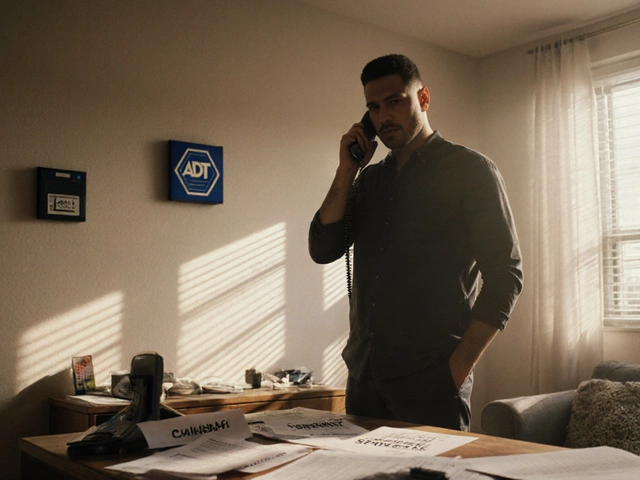Ever wondered what happens to your security cameras if your Wi-Fi decides to take a break? You're not alone. This is a common concern among homeowners relying on wireless surveillance. Let's get one thing straight—whether your cameras can work without Wi-Fi depends on the type of system you have.
Most modern home security cameras use Wi-Fi for a reason. It allows them to stream live footage to your phone or computer, send alerts, and cloud-save recordings. But, if the Wi-Fi dips out, not all is lost. Some cameras still have your back.
- Basics of Wireless Cameras
- What Happens Without Wi-Fi?
- Offline Recording Options
- Maximizing Security Without a Network
Basics of Wireless Cameras
Home security cameras have come a long way from those bulky setups with tangled wires everywhere. Most of us now lean towards wireless cameras. Why? Because they’re easier to install and don’t ruin your home decor with cables. They operate using your home Wi-Fi, making them sleek and handy.
One thing to keep in mind—just because these cameras are called 'wireless' doesn’t mean they’re totally without wires. Many will still need to be plugged into a power source. But when it comes to data transmission, they rely on your Wi-Fi network. Straightforward, right?
Let’s get into some specifics. Wireless cameras typically offer the cool ability to view live footage from anywhere, as long as you have an internet connection. Most models also offer motion detection, which can trigger alerts to your phone, so you know if any funny business is happening at home. And the cherry on top? Cloud storage for your video footage.
It’s worth mentioning that they usually come in two flavors: Wi-Fi cameras and cellular cameras. While the former uses your home Wi-Fi, some cellular cameras use a SIM card just like your smartphone, which can be pretty nifty if you’re in a spot with weak internet.
| Type | Data Connection |
|---|---|
| Wi-Fi Camera | Home Wi-Fi |
| Cellular Camera | Mobile Network (SIM) |
Wireless doesn’t mean maintenance-free, though. You’ll still need to keep an eye on firmware updates for security patches and maybe clean the lens every now and then, just like your glasses.
What Happens Without Wi-Fi?
So, your home security cameras are all set up and suddenly, bam, your Wi-Fi goes kaput. What's next? First off, don't panic. Depending on the camera type you have, there might be some surprising ways your system continues to function even offline.
If you're using battery-powered or wired IP cameras, these little workhorses often have SD card slots. This means they can keep recording footage directly onto a card. Even if you're offline, you're still capturing important moments. Remember though, without Wi-Fi, live streaming, and mobile notifications won't happen.
On the other hand, if you’re using fully cloud-dependent cameras, those may face hiccups without Wi-Fi since they rely on the internet to save footage and send alerts. These types usually go into a low-power mode or attempt to reconnect to the Wi-Fi automatically.
For those using hybrid systems—where the cameras are part of a larger security setup that includes a base station—you're in luck. Many of these setups maintain basic recording functions locally so while you lose remote access, your system isn't entirely offline.
Now, have you thought about what happens to your footage if local storage is maxed out? Some cameras overwrite the oldest files when space runs out, ensuring you always have the most recent recordings.
- Wired DVR/NVR systems are another story altogether. These generally record continuously and aren't reliant on Wi-Fi for basic functions, but any internet-dependent features like remote viewing get disabled during outages.
- Planning for downtime is smart: investing in a camera with SD card support, opting for a hybrid system, or even subscribing to services that offer local backup options can offer peace of mind.
Understanding how different Wi-Fi cameras react in offline settings is crucial. It can help you choose systems that suit your security needs, ensuring that your home remains a stronghold even if the internet doesn't cooperate.

Offline Recording Options
Believe it or not, some home security cameras are like the trusty Swiss army knife. When your Wi-Fi goes MIA, these cameras have a backup plan: offline recording. Let's break down how this works and what you need to consider.
First thing to know is, not all cameras have this feature. If offline recording is crucial for you, make sure to specifically look for it when shopping around. Here’s how cameras handle things without Wi-Fi:
- SD Card Storage: Many security cameras come with a slot for an SD card. When Wi-Fi is unavailable, the camera can save footage directly onto the card. Depending on the quality of your camera, this could be a high-resolution clip, still image, or both.
- Internal Hard Drive: Some advanced models have their own built-in storage, kind of like a mini DVR. It’s less common, but a lifesaver if immediate access to footage is important for you.
- Hybrid Systems: Cameras part of a larger security system might save recordings locally on a home-based receiver or hub. Later, the hub syncs with the cloud once the Wi-Fi is back up.
A quick consideration—keeping some storage space free is always wise. Cameras might loop images which means older footage will be overwritten when space runs thin. If your current card is full, swap it out or clear it regularly to avoid surprise wipeouts.
Plus, using an SD card or local storage helps dodge potential privacy issues associated with cloud storage services. Just remember to check your camera’s compatibility with certain card sizes, as that can vary.
With a little planning, you can ensure your security cameras don’t skip a beat, even when the Wi-Fi does.
Maximizing Security Without a Network
So, your Wi-Fi is out, but you still want to keep tabs on things. No worries—there are plenty of ways to ensure your home security cameras stay effective even without a network.
First, consider cameras with local storage options. Many Wi-Fi cameras offer microSD card slots or built-in hard drives. This means they can record footage internally even when the internet's down. Check your camera's specs to see what local storage options it offers, and make sure they're enabled.
Next up, look into planning the best camera placements for maximum coverage. Place cameras at strategic points like main entrances, back doors, and driveways. These spots typically catch the most action, ensuring any critical events are captured, regardless of internet status.
Another option? Battery or solar-powered cameras. These models don't rely on your home's power grid, making them more versatile in outages. Plus, many of these have local recording features, giving them a solid backup plan.
- Choose cameras with built-in alerts like motion detection that sends alerts to connected devices once Wi-Fi resumes.
- Consider pairing your system with a battery-powered backup hub to ensure cameras keep rolling and footage is preserved.
- Additionally, setting up offline alerts with a home automation hub can alert you to unusual events via alternate security tech, even offline.
Lastly, it's helpful to have backup internet solutions in place, like a mobile hotspot or cellular camera model. These cameras can switch to cellular data when your main Wi-Fi network fails.
For a quick reference, here's a summary of camera capabilities without Wi-Fi:
| Camera Feature | Offline Capability |
|---|---|
| Local Storage | Records to SD card or hard drive |
| Battery/Solar Power | Operates independently of home power |
| Motion Detection | Sends alerts once connected |
| Cellular Connectivity | Switches to mobile data usage |
These tips help keep your security system robust, ensuring your space stays secure without relying entirely on a network connection. Whether there’s a hacker on the loose or you’re just grappling with an internet outage, now you've got strategies to keep your home security cameras functioning.

